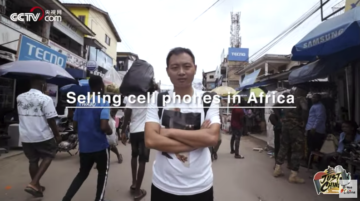
Xiaomi is on a roll. The Chinese tech giant announced it will soon start delivering its long-awaited first electric vehicle (EV), a major new direction for a firm known for its smartphones and Steve Jobs-esque CEO.
In Africa, where the smartphone market is rebounding, Xiaomi has suddenly emerged as a significant player and looks set to challenge Samsung and even Transsion Holdings.
Although some Xiaomi models were available in a few African countries from at least 2015, the firm took a decisive step in January 2019 when it established a new department — reporting directly to the senior vice president — to explore the African market.
Xiaomi’s share of Africa’s smartphone market was in the very low single digits in 2019. However, according to market research firm Canalysis, it stood at 6% in Q3 2022 and then doubled to 11% a year later. Samsung (26%) and Transsion (46%) are still some distance ahead, but in Nigeria, Xiaomi reached 19%, in second place behind Transsion with its triad of brands.
How did Xiaomi make such rapid progress? A commentary published by the Chinese social media platform OneSight on WeChat provides an answer based on insights from Jeff Tang, Xiaomi’s African marketing director based in Egypt.
In short, Xiaomi learned from Transsion’s success in providing African users with the kinds of phones they want at affordable prices. But as Tang put it, Xiaomi is succeeding in Africa because it is “making friends with users. This is about respecting and listening to them and acting on what they want. Successful marketing requires long-term planning.”
According to Tang, in Africa, users want smartphones that offer “value for money, a large screen, a big memory, long battery life, and fast charging.” But how to stand out among several other brands, not least Transsion’s Tecno, Itel, and Infinix? According to Xiaomi’s Africa marketing director, social media marketing is crucial, and he uses the “stovetop” analogy to explain how his department marketed the new Redmi 13C smartphone released in November.
The Four Components of Xiaomi’s Social Media Marketing Strategy in Nigeria:
- PREHEATING TEN DAYS PRE-LAUNCH: Organize competitions and prizes on prominent social media channels to create a buzz.
- TURNING UP THE HEAT THREE-DAY OFFICIAL LAUNCH: Publish “unboxing” videos cocreated with bloggers; disseminate launch events widely to create trending topics and hot searches; integrate campaigns with Black Friday sales.
- CATCHING FIRE TEN DAYS POST-LAUCH: Promote influencer/KOL content; provide giveaways and promotions on official channels.
- SIMMERING PERIOD FOR AT LEAST A MONTH: Integrate products with Christmas shopping season promotions.
WHY IS THIS IMPORTANT? Xiaomi seems to be covering ground in a much shorter time than the several years it took Transsion to establish its market dominance in Africa. Xiaomi is right on the money with its youth-focused social media campaigns targeting Africa’s predominantly younger consumers.
Read the commentary by OneSight on WeChat (in Chinese).
SUGGESTED READING
- GizChina: Xiaomi’s Growing Influence In Africa: A Success Story by Efe Udin
- TMTPOST: As Xiaomi Enters Africa, Can Transsion Hold Its Prime Market Position?









